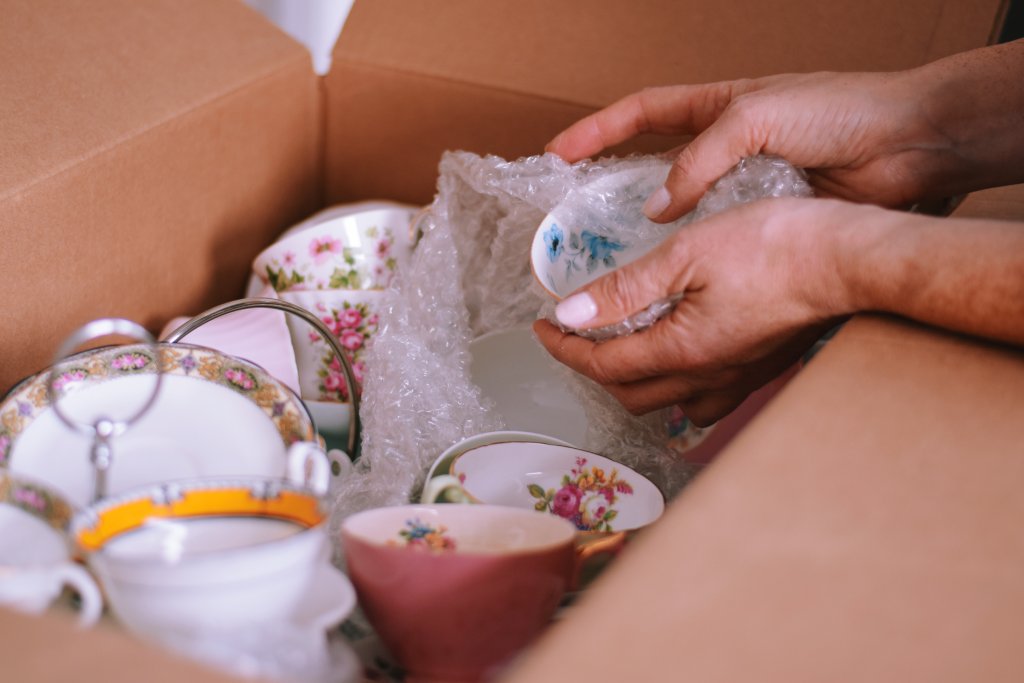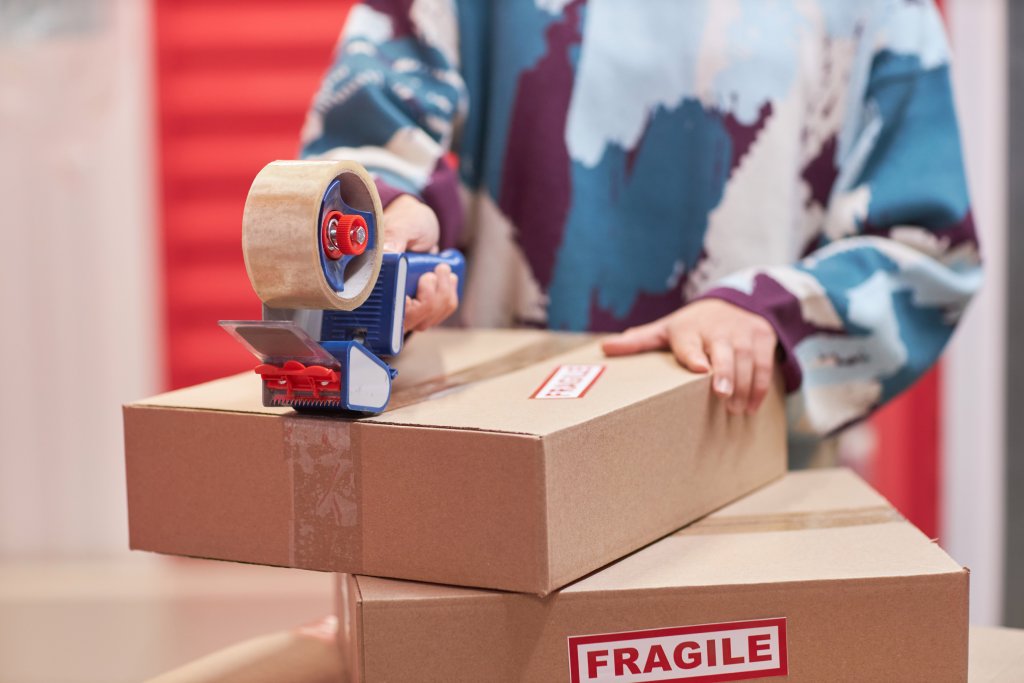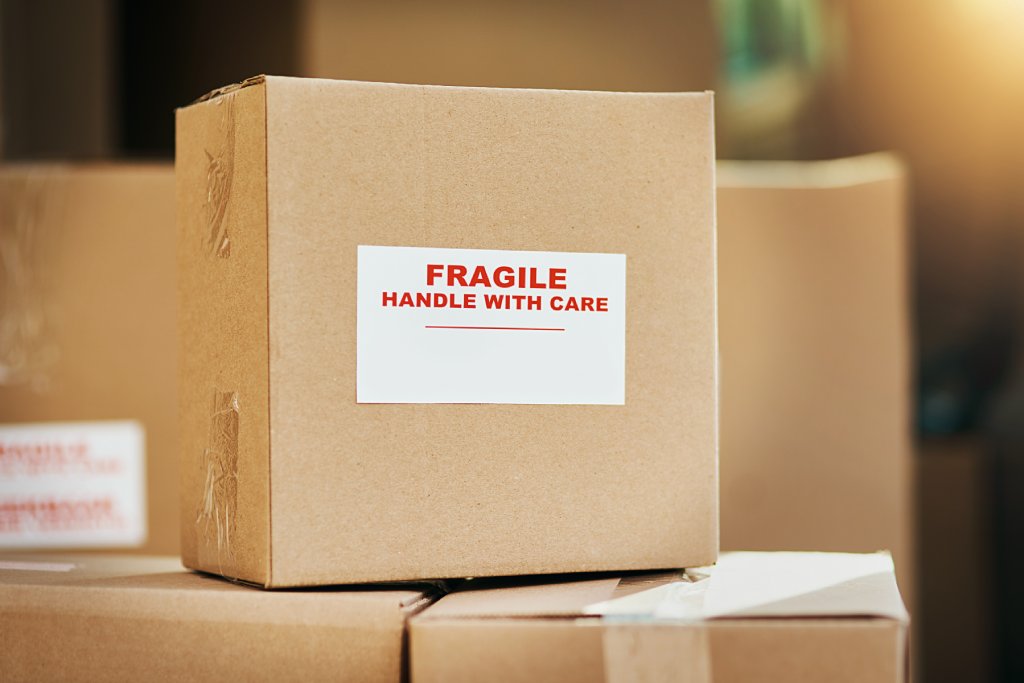Packing up your fragile items for a long-distance move is no small task. We get it—it’s stressful trying to make sure your grandmother’s china, your favorite glass vases, and all those little trinkets you’ve collected over the years make it to your new place in one piece. Here at Bernard Movers, we’ve seen it all when it comes to moving delicate items. So, let me walk you through some tips and tricks that we’ve learned from our years of moving Chicagoans all over the country.

Gather the Right Packing Materials | Long-Distance Moves Chicago
Before you start wrapping up that crystal vase, you need to get your hands on the right supplies. Trust us, using proper materials makes all the difference between a smooth move and a box full of shattered glass.
Essential Packing Supplies You’ll Need
- Sturdy boxes: Look for strong, double-walled boxes in various sizes. We’ve found that new boxes are much more reliable than the ones you’ve been storing in your garage since last Christmas.
- Bubble wrap and packing paper: Don’t skimp on these! Bubble wrap is your best friend when it comes to cushioning those fragile items. Packing paper works wonders for filling in gaps.
- Dish packs or cell kits: These special boxes with compartments are perfect for glasses and small breakables. They may cost a bit more, but they’re worth it.
- Packing tape and marker pens: Reinforce the bottom of every box with tape and label each one clearly.
Pro tip: If you’re looking for affordable packing materials, there are plenty of local Chicago spots like hardware stores or even warehouse clubs that offer bulk deals.
Prepping Your Fragile Items for Packing
Preparation is key when it comes to protecting your fragile items. It might take a little more time, but being organized before you pack will save you a headache (and maybe even a few tears) later on.
Clean and Dry Everything First
Always make sure your items are clean and completely dry to prevent mold or damage during the long-distance move.
Dismantle When Possible
If your fragile items can be disassembled—like the removable parts of a lamp or the legs of a delicate side table—go ahead and take them apart. This will make them easier to pack and less likely to get damaged. Remember to pack all screws and hardware in a labeled zip-lock bag so they don’t get lost.
How to Pack Different Types of Fragile Items
Glassware and China
Packing glassware can be one of the most nerve-wracking parts of the process. The key here is to wrap each piece individually in bubble wrap or packing paper, and then place them in a sturdy box. Use dish packs or create a cushioned layer at the bottom of the box to absorb any shocks.
Tip: Place the heaviest items at the bottom and the lighter ones on top to keep the pressure off fragile pieces.
Electronics
From laptops to gaming consoles, electronics require special care. Ideally, pack them in their original boxes. But if those have long since been tossed, use anti-static bubble wrap and plenty of padding.
Always pack your TV upright and use foam corners to protect the screen from scratches.
Artwork and Mirrors
For artwork and mirrors, use glassine paper or bubble wrap to cover the surface, then slide them into specialized picture boxes. Be sure to add corner protectors to avoid any frame damage.
Lamps and Light Fixtures
When packing lamps, remove the bulbs and shades first. Wrap each part separately in bubble wrap, and place the base in a tall, narrow box.

Expert Packing Techniques to Prevent Damage
Layering Technique
Start by placing a cushion of crumpled paper or foam peanuts at the bottom of your box. This creates a soft base for your items to rest on. As you fill the box, add layers of padding between each item to prevent movement.
Space-Filling Techniques
One of the biggest packing mistakes we see is leaving empty spaces in the box. Those gaps can cause your items to shift around during the move, increasing the risk of damage. Fill any empty spaces with packing material or even old towels to keep everything snug and secure.
Secure Sealing
Make sure to seal the top and bottom seams of each box with tape. For extra protection, double-tape the corners and any stress points to reinforce the box’s structure.
Labeling and Organizing Packed Boxes
Clearly labeling your boxes will make unpacking at your new Chicago home so much easier. Use bold markers to write “Fragile” and “This Side Up” on each box. Trust me, you’ll thank yourself later when your movers know to handle those boxes with extra care.
Use Color-Coded Labels
If you’re moving into a multi-story home, color-coding boxes by room can save a ton of time. For example, red for kitchen items, blue for living room, etc. It’s a simple trick, but it keeps the process organized.
Common Mistakes to Avoid When Packing Fragile Items
Avoid these common mistakes, and you’ll be miles ahead of most movers:
- Overpacking boxes: Too much weight can cause the box to collapse or damage the items inside.
- Using flimsy boxes: Old, worn-out boxes are an accident waiting to happen.
- Not labeling boxes properly: Without proper labeling, movers might handle boxes roughly, leading to broken items.
When to Consider Professional Packing Services | Chicago’s Best Long-Distance Moves
If you’re short on time or simply want to leave the hassle to someone else, consider hiring professional packing services. At Bernard Movers, we’ve helped countless families in the Chicago area pack up their most delicate items. We use industry-grade materials and expert techniques to ensure your valuables are protected.
Why Hire Bernard Movers? | Chicago Long-Distance Movers
Hiring a professional team like ours not only saves you time but also gives you peace of mind knowing that your fragile items are in safe hands. Plus, our experienced crew knows exactly how to handle Chicago’s unpredictable weather, making sure your belongings arrive safely no matter the conditions.
Tips for Moving Fragile Items During Chicago’s Weather Extremes
Speaking of weather, we all know that Chicago can be a bit of a wildcard. During winter, cold temperatures can make glass and ceramics more brittle, while humidity in the summer can cause boxes to weaken. It does not stop us to help you with long-distance move!
How to Protect Items from Weather Damage
- Wrap items in plastic sheeting to keep them dry.
- Avoid moving on extremely cold days when possible.
- Store boxes in a climate-controlled area of the truck to prevent freezing or moisture buildup.

Choose Bernard Movers for Your Next Long-Distance Move!
Packing fragile items for a long-distance move might feel overwhelming, but with the right techniques and a little patience, you can do it! Remember, the key is to use quality materials, pack methodically, and always label your boxes. And if you’re ever feeling stuck or unsure, Bernard Movers is here to help. We’ve been helping Chicago residents move their most precious items for years, and we’d be happy to make your next long-distance move or any other moving task smooth and worry-free.
Got questions or need a moving quote? Reach out to us at Bernard Movers—we’re just a call away!

